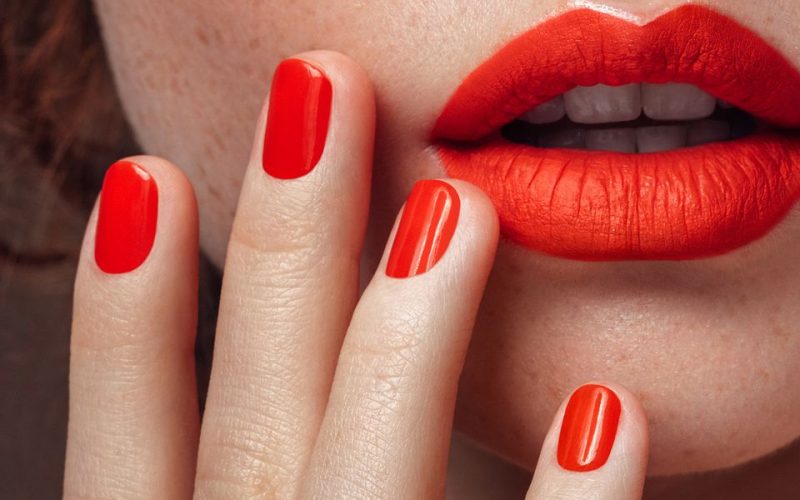There are different types of gel nails to show your beauty. Getting the perfect manicure takes more than picking a nail polish color and shape.
You must also consider the occasion, your lifestyle, the amount of time spent at the salon, and your money.
With so many different types of gel nails and ways to customize them, there’s a little something for everyone.
Gel manicures are a great option for fashionistas searching for long-lasting and colorful nail treatments.
Unlike ordinary nail polishes, Gel nail paint and enhancements use cutting-edge technology to create durable nail designs.
Gel manicures are available in a variety of intensities and strengths.
In addition, gel manicures require expensive equipment and exact application, so they are best left to a trained expert.
While kits are accessible online, gel manicures require costly equipment and flawless application.
Read on as we discuss some of the types of gel nails available.
Different Types of Gel Nails
1. Hard Gel
Hard gel is a lightweight, tough, and long-lasting material. It’s also odorless, hypoallergenic, and pregnancy-friendly.
Furthermore, these types of gel nails can be used to add length instantly. They can also last for 3-4 weeks. Also, they are lightweight, strong, and durable.
However, the cons of these types of gel nails are that they must be filled or removed by a professional and can also be challenging to shorten or fix at home.
Hard gel is one of the most popular nail improvements. A traditional gel is another name for it. Hard gel is mainly used to extend the length of the nails.
It can be filed into any desired shape. This is one of the reasons why hard gel is so popular.
It can change an entire set of incredibly short nubs into a set of red carpet (or prom) ready nails in just a few hours.
If your nail breaks on the way to the salon, you needn’t worry. A skilled technician should be able to make you a new one that matches the rest.
Hard gel is the most powerful of the several types of gels. It can tolerate daily use and serve as a protective layer for the natural nail.
2. Soft Gel
A soft gel is also known as a soak-off gel because it may be removed by soaking in acetone.
It’s not strong enough to hold an extension in place, but it can help strengthen short to mid-length natural nails.
In terms of consistency, it’s a cross between hard gel and gel polish. It’s applied with a brush and takes around 30 seconds to cure under UV or LED light.
In addition, the pros of these types of gel nails are that they Strengthen short to medium-length nails.
Also, it is a longer-lasting soak-off gel, and it can be removed by soaking it in acetone.
However, the major cons of these gel nails are their inability to add length and the wear on free edges over time.
3. Gel Polish
Gel polish is sometimes Shellac, which isn’t exactly correct because Shellac is a CND product range.
It has the same runny consistency as ordinary polish. However, like the other gels mentioned, it must be cured for 30 seconds under UV or LED light.
In comparison to other gels, gel polish applies the thinnest layers, and as a result, it provides no support to the natural nail. It’s merely a smudge-resistant, longer-lasting nail color.
It can be used on natural nails and over hard or soft gel. When used on natural nails, it can last up to two weeks.
It’s better to go to the salon to have your gel polish removed. However, if you’re in a hurry, you can do it safely at home.
The Pros of these types of gel nails are that they have thin application and the fastest gel time, and you can easily remove them at home.
However, the cons of these gel nails are that they don’t provide gel and don’t last as long as other gels.
Dermatologist Advise on Nail Gel
Dermatologists recommend the following tips to keep your nails healthy before, during, and after gel manicures:
- Make an effort to communicate with your manicurist. Please inquire about sterilizing tools and glance around to ensure they are washing and disinfecting tools after each client. Furthermore, never allow your manicurist to push or cut your cuticle since this may cause inflammation and infection.
- Instead of using gel paint, consider using regular nail polish. Because acetone is required to remove gel polish, this is especially critical if you have reoccurring nail problems or are allergic to it.
- Picking gel nail paint is not a good idea. Don’t pick at it or try to remove the color with other nails or tools when it starts to fade. Instead, make an appointment with your manicurist to have the polish removed.
- Only use acetone to wet your fingertips. Soak your fingertips in acetone instead of your entire hands or fingers when removing your nail polish to protect the surrounding skin. Cotton balls can also be used to remove the polish. Soak the cotton balls in acetone and wrap little pieces of aluminum foil over your fingertips to apply them to your nails. This way, only your nails will come into contact with the acetone. The nail polish should peel off easily after about 15 minutes.








